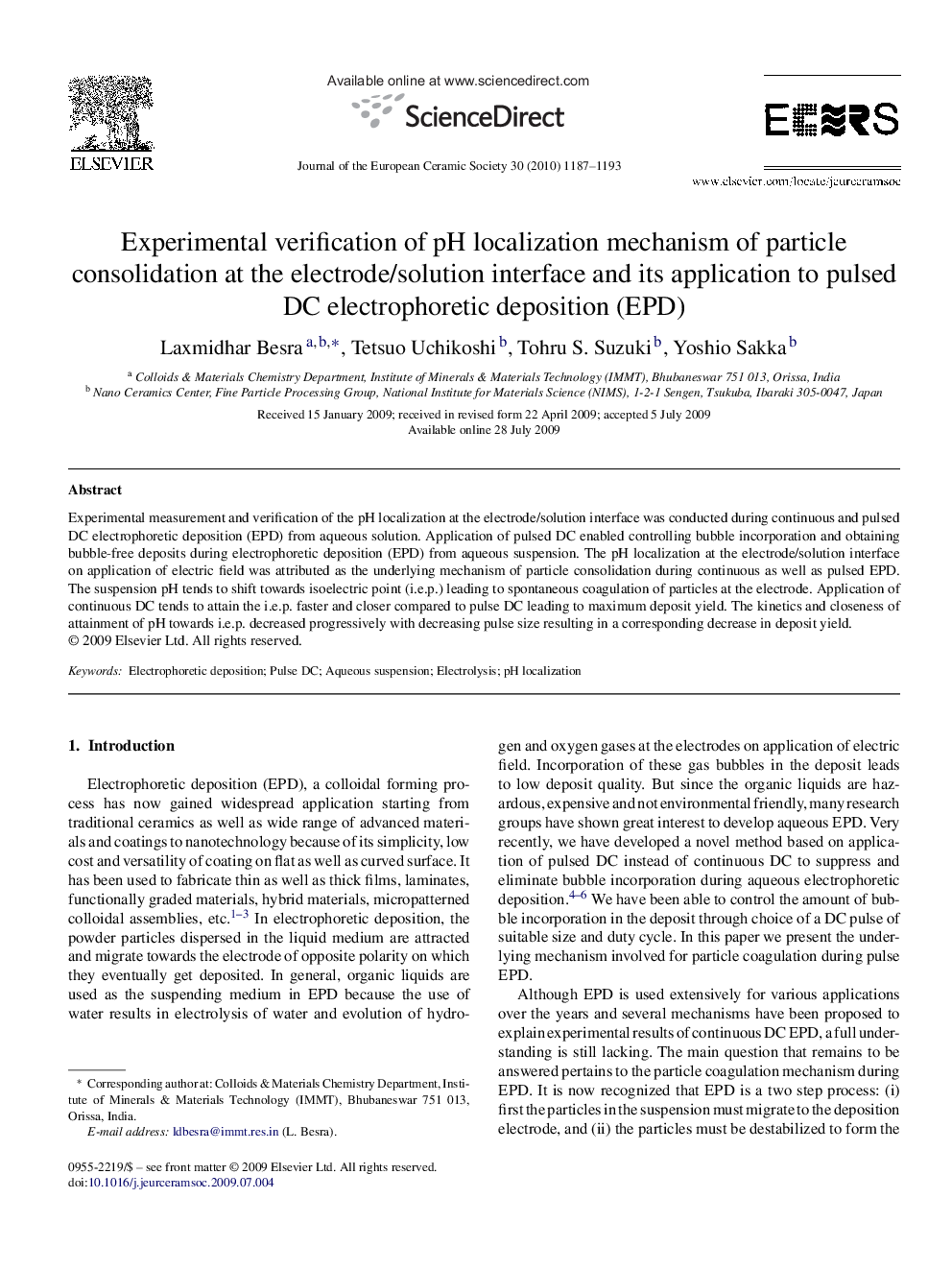| Article ID | Journal | Published Year | Pages | File Type |
|---|---|---|---|---|
| 1477454 | Journal of the European Ceramic Society | 2010 | 7 Pages |
Experimental measurement and verification of the pH localization at the electrode/solution interface was conducted during continuous and pulsed DC electrophoretic deposition (EPD) from aqueous solution. Application of pulsed DC enabled controlling bubble incorporation and obtaining bubble-free deposits during electrophoretic deposition (EPD) from aqueous suspension. The pH localization at the electrode/solution interface on application of electric field was attributed as the underlying mechanism of particle consolidation during continuous as well as pulsed EPD. The suspension pH tends to shift towards isoelectric point (i.e.p.) leading to spontaneous coagulation of particles at the electrode. Application of continuous DC tends to attain the i.e.p. faster and closer compared to pulse DC leading to maximum deposit yield. The kinetics and closeness of attainment of pH towards i.e.p. decreased progressively with decreasing pulse size resulting in a corresponding decrease in deposit yield.
